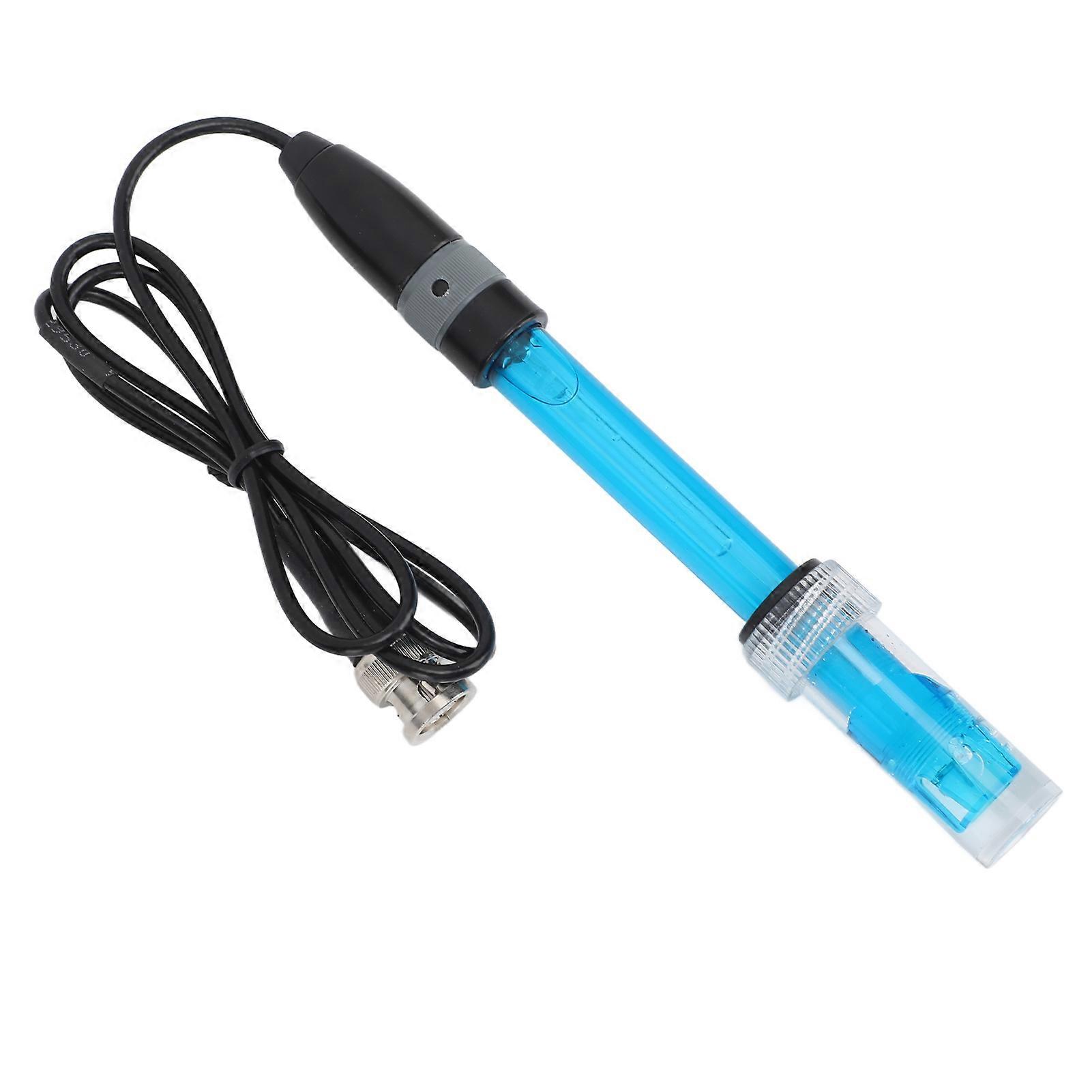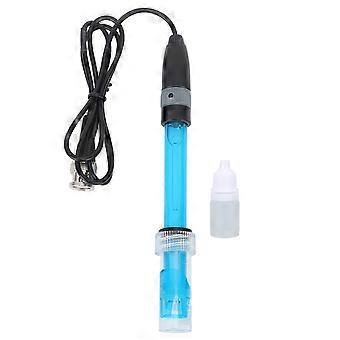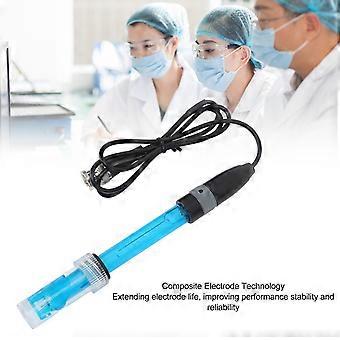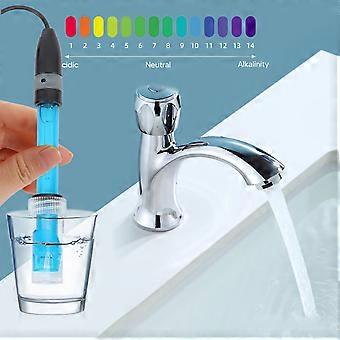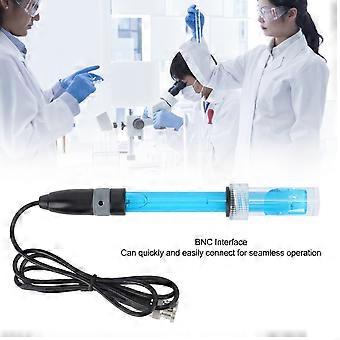Description
PH Electrode Probe Rechargeable PH Controller Meter Sensor with BNC Connector for Laboratory School
PH Electrode Probe Rechargeable PH Controller Meter Sensor with BNC Connector for Laboratory School
Item Type: PH Electrode Probe
Material: ABS
Heating Voltage: 5±0.2V (AC DC)
Working Current: 5±10mA
Detection Concentration Range: PH0-14
Temperature Detection Range: 0-80℃
Response Time: ≤5S
Stable Time: ≤60S
Power Consumption: ≤0.5W
Working Temperature: -10℃ to 50℃ (nominal temperature 20℃)
Working Humidity: 95% RH (nominal humidity 65% RH)
Service Life: 3 years
Output: Analog voltage signal output
Preparation Before Use:
1. Gently remove the protective bottle from the top of the electrode and store it for future use.
2. Clean the white deposited salt on the outside of the electrode with deionized water.
3. To maintain an appropriate penetration rate, the liquid level inside the tube should not exceed the end of the spiral glass tube, and should be at least 1 inch (2.5 cm) above the sample liquid level. The electrode ball end should be completely placed in the tested liquid when in use. Allow the bulb to come into full contact with the liquid to be tested, resulting in an ion response effect.
4. Gently shake the electrode (like shaking a thermometer) to remove any bubbles in the electrode.
5. Immerse the electrode in the pH electrode storage solution for 1 hour. If there is no electrode storage solution, add 1g KCl to 200mL pH7 buffer as a temporary electrode storage solution. When the electrode is not in use, a long term storage solution can be configured to activate and preserve the bulb end. The preparation method can add 10mL of 3.3kcl solution to 200mL of pH4 buffer solution. (3.3KCL is saturated potassium chloride, and the preparation method is to weigh 23 grams of potassium chloride and 100ml of deionized water), appropriate amount of preservative.
Precautions When Using Electrodes:
1. Use fresh buffer solution.
2. Open the electrode protection sleeve.
3. Measure the clearance and rinse the electrode with deionized water.
4. Stir the buffer and sample: a) Always stir at the same rate; b) Stir first and then measure.
5. When preparing the pH electrode, rinse the electrode with distilled water before and after measurement. Use a cloth without linen to absorb excess moisture from the electrode head and avoid rubbing the electrode ball, as it may generate static electricity and interfere with accurate pH measurement.
6. Ensure that the buffer temperature is the same as the sample temperature. If the sample temperature is different, a temperature compensation probe can be used for temperature compensation.
7. Regularly check the electrode slope using the two point calibration method. When the electrode reading drifts or the slope is below 92%, please clean the electrode according to the electrode cleaning method.
Electrodes Maintenance:
1. General cleaning solution for electrode cleaning, immerse the electrode in 0.1M HCl or 0.1M HNO3 solution for 15 minutes, and then immerse the electrode in electrode storage solution for 30 minutes.
2. Liquid interface blockage (salting out)
Reasons: Hard water, mud, organic matter, floating microorganisms in water, moss, etc. Attached to the leaking sand core and PTEF around the bulb, the external reference electrode is not working.
Solution: Check if there are too many crystals. If so, please rinse the crystal repeatedly with deionized water, check if the flow rate is normal. If not, please soak the electrode in hot water (60℃) for 15-20 minutes; Immerse the electrode in a hot saturated KCl (60℃) solution for 20-30 minutes and cool to room temperature; Soak the electrode in a pH 4 buffer solution for 30 minutes. Immerse the electrode head in concentrated HCl for 5-10 minutes, rinse the electrode, and check if the electrolyte flow rate is normal. If the connection is still blocked, pull the connection (do not touch the glass bulb).
3. Precipitation of inorganic substances on pH sensitive membranes
Reason: Inorganic sample measurement
Solution: Clean with EDTA, ammonia or acid
Solution: Activate the electrode, soak it in 0.1M HCl for 1 minute, rinse it with tap water for 30 seconds, soak it in 0.1M KOH for 1 minute, rinse it with tap water for 30 seconds, and calibrate the test electrode with buffer solution. If it still fails, repeat the above steps up to 3 times.
4. PH sensitive membrane dehydration
Reasons: Improper storage, long term use, high temperature operation, or strong alkaline solution, resulting in slow and unstable response
Solution: Remove the electrode from the environment and check if there is dirt on the surface of the bulb. If present, gently wipe with ethanol cotton and then rinse with deionized water. (Pay attention to the fragility of the light bulb and pay attention to the wiping process). Then check the liquid contact area to see if there are any pollutants adhering to the surface. If available, it can be rinsed with deionized water. You can also shake the electrode back and forth in the measuring cup. If the water quality is
-
Fruugo ID:
376703011-814845467
-
EAN:
7691308239679
Delivery & Returns
Dispatched within 24 hours
Shipping from China.
We do our best to ensure that the products that you order are delivered to you in full and according to your specifications. However, should you receive an incomplete order, or items different from the ones you ordered, or there is some other reason why you are not satisfied with the order, you may return the order, or any products included in the order, and receive a full refund for the items. View full return policy

